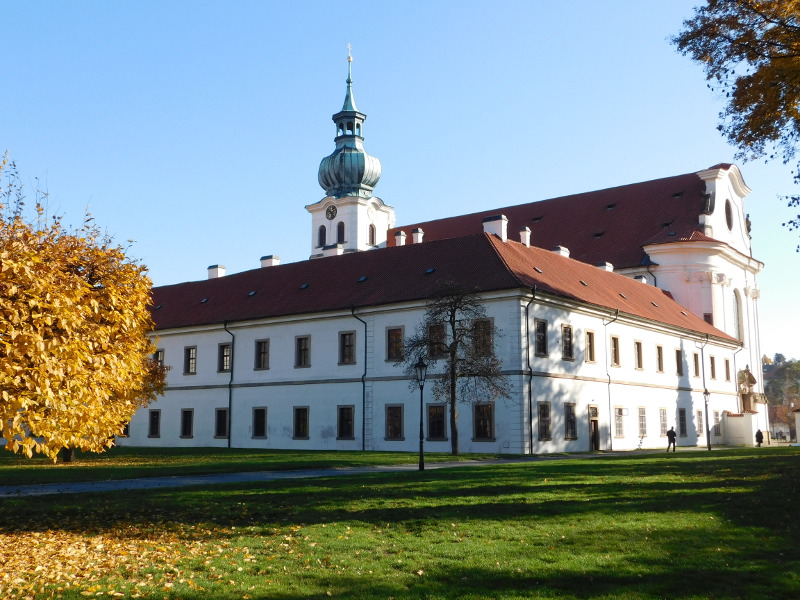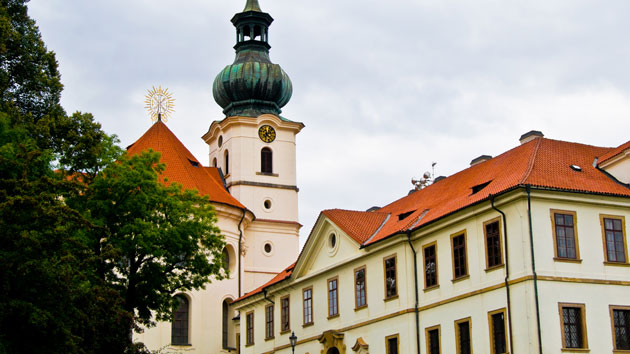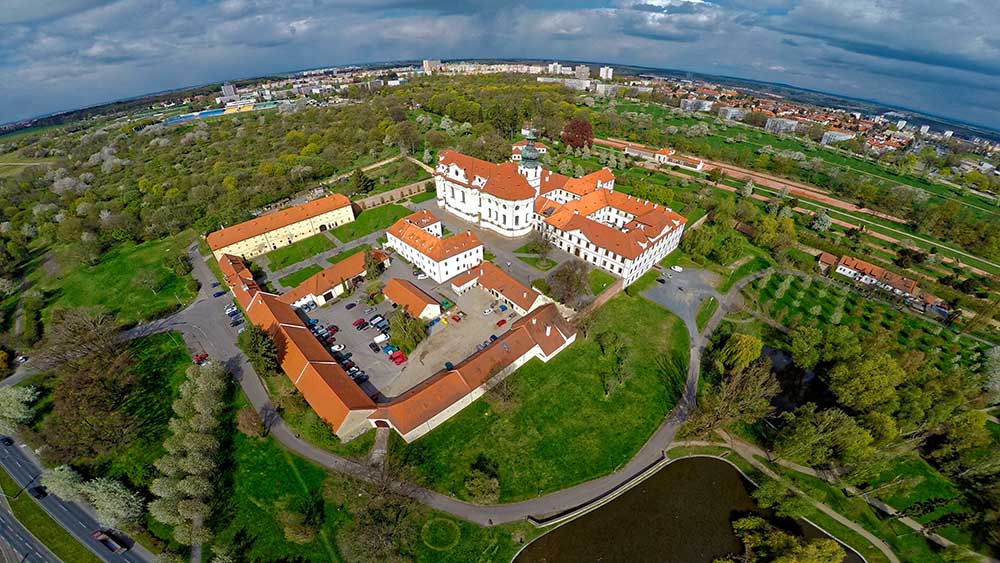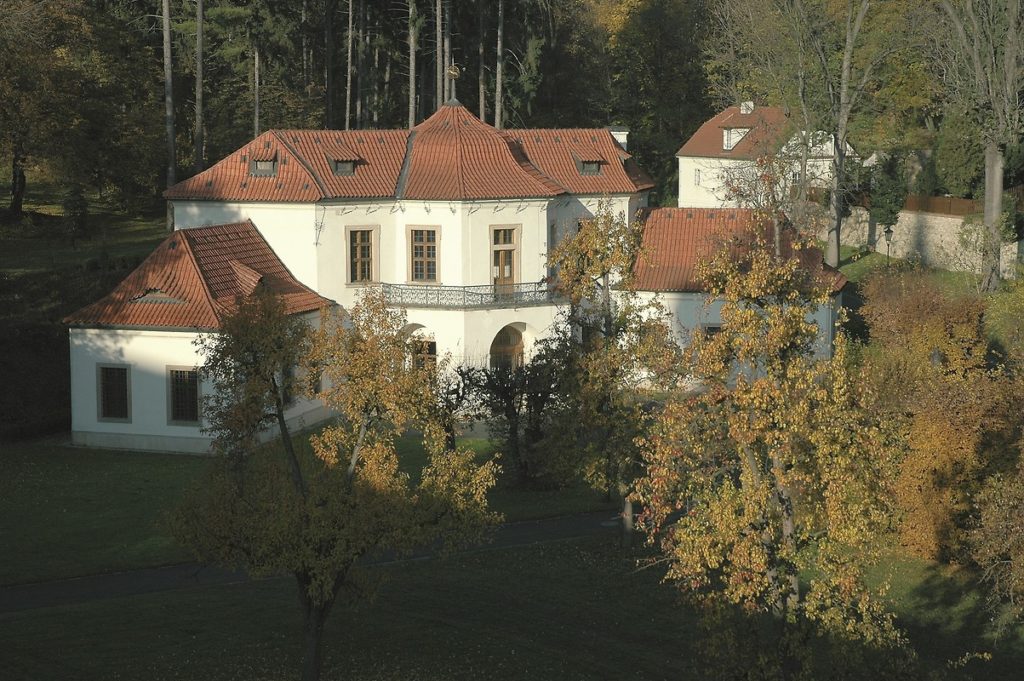At the expense of hotels, accommodation platforms in Prague are taking a growing share of the increasing business of tourists. The percentage of Airbnb platforms in tourist accommodation is increasing, and hotel owners are trying to counter this with new development projects.
Every year, three hundred thousand more tourists come to Prague. However, while the number of hotel beds has risen by 1.4 percent over the last two years, accommodation capacity via Airbnb platforms has grown by 34 percent. These results come from a study by the consulting firm Deloitte, according to which, last year Prague had available for short-term rental about fourteen thousand apartments.
“The possibility of profits through short-term housing platforms pushes people out of the city center. We expect this effect to extend farther,” said Deloitte’s property manager Miroslav Linhart.
According to Cushman & Wakefield, there are now in the capital a total of 16 hotel projects with 2900 rooms. However, only 42 percent of this capacity is being built. “Taking into account the strength and considerable size of the Prague hotel business, the planned construction is relatively modest and easily absorbed by the market. Especially when we realize that it may take many years for the hotels to be completed,” said Bořivoj Vokřínek, a hotel market specialist from Cushman & Wakefield.
According to him, an example of a complex path from the plan to the realization is the project of a luxury hotel of the Ritz Carlton chain in buildings near the Old Town Square. Builders are already working there, but the project has been under construction since 1998. However, the growth in accommodation platforms does not mean that Prague hotels are empty. “Their occupancy has been around 78 percent on average for the second year running. This percentage is a relatively high number. However, the average prices of accommodation are gradually increasing, and Prague is already close to the prices of Vienna,” said Václav Stárek, President of the Czech Association of Hotels and Restaurants.
Per room, the price for a four- or a five-star hotel in Prague in September is an average of ninety euros, and in Vienna 102 euros. Prague hoteliers year-on-year average prices increased by 2.2 percent, while the occupancy rate increased by 70 percent according to the hotel association statistics.
The wall on Kampa, by the Vltava River, has been redesigned by the internationally renowned artist and illustrator Petr Sís, whose works adorn public space in New York, Lisbon, Cape Town or at Václav Havel Airport in Prague.
The “Velvet Bridge” commemorates the anniversary of the Velvet Revolution and visually discusses the history of Czechoslovakia between 1918 and 1989. The work will be completed next spring.
The most recent artistic achievement of Sís is this replica of the Charles Bridge. The author will place 12 paintings in the arches of the bridge, which symbolically describe the history of Czechoslovakia between 1918 and 1989.
On the Kampa wall, two paintings in a cartoon design by Petr Sis have been introduced, one representing Tomáš Garrigue Masaryk and the other representing Václav Havel. The finished work will be installed next spring after the necessary reconstruction of the wall.

Visualization: Petr Sis
The work was initiated by a philanthropist of Irish origin, Bill Shipsey, founder of the Art for Amnesty initiative. Shipsey is engaging prominent artists around the world in promoting issues related to human rights and the development of democracy.
He has collaborated on projects around the world with personalities such as Nelson Mandela, Joan Baez, Bono Vox, Peter Gabriel, U2, Sting, Yoko Ono, Paul Simon and John Legend.
As an admirer of the first President of the Czech Republic, Shipsey also advocates the installation of the so-called Václav Havel benches around the world.
“On the occasion of the 30th anniversary of this international event, we are honoured to provide Prague with this artistic gift for all the brave women and men who made the revolution happen. We hope that the Velvet Bridge will remind both locals and visitors that freedom and human rights are not a matter of course and must be protected every day,” said Bill Shipsey.
Petr Sís, who alternately lives in New York and Prague, in Nerudova Street in Malá Strana, is delighted to realize the project. “I’m glad this wall is turning into a bridge. I am still finishing some elements of the work, and because I like to come back here, I care about every detail,” he said.
The capital receives the work as a donation from partners, three-quarters of the costs of realization are covered by contributions of private persons.
If it closes, hundreds of prostitutes are likely to move to the centre.
Prague’s most extensive erotic club survival is still unsure. Deputy Mayor Pavel Vyhnánek has been trying to move the Showpark from Holešovice Market Hall for a long time, and negotiations with the city covering actions have been on deadlock due to a lawsuit.
The future of the Holešovice Showpark is expected to be finally decided by a lawsuit that Prague has been running for several years against Delta Center (current tenant of the market), which also includes Hall 18 with the Showpark. It still has a long-term lease, but Prague considers it invalid. The dispute is now pending before the Court of Appeal on 19 November 2019.
Every year, 160000 customers “pass-through” it in continuous services from 600 women. The Showpark was established in the mid-1990s, after an agreement to withdrew prostitutes from the streets of the metropolis. Now hundreds of “performers”, as they call themselves, are in a situation where they might figuratively find themselves on the streets.
“This is not a normal movement. The establishment of spare areas for operating with basic safety and security requirements imply two years of work in the Showpark. Less traffic could be settled within a year. These women, however, will not take unpaid leave for that time,” said the executive of Eroc, Zbyněk Matela, which operates the Showpark.
The crisis scenario for the quick closure of the Showpark looks like it will make some women go around Wenceslao Square, where the offer of these services has been decreasing in recent years. Others will try luck in private homes around the marketplace because there is a clientele, and some will move to new smaller businesses in the metropolis.
“When we started talking about the closing of the Showpark, we noticed a strong interest from property owners offering rental. Perhaps we will be forced to run a larger number of smaller businesses,” says Zbyněk Matela.
Experts warn that citizens’ initiative wants to ‘fight.’
People who have had services from these women, as well as independent experts in the field of addictology, warn. According to them, it is not only a private company problem but a public interest in a broader context.
“We will never escape the phenomenon of prostitution. But we can have it under control, which was the case in the 1990s. We have businesses where specific rules work and the accompanying aspects, such as drugs or violence, are much better handled. From a professional point of view, in terms of control, an operation of this type is the best option”, explains the expert and founder of DropIn Ph.D centres, Ivan Douda.
In support of the Showpak in Holešovice Market, even a civic initiative introduced by the actor and director Václav Čížkovský has emerged to fight it.
Kinský Gardens are an area of 22 hectares located in Prague 5, on the southeastern slope of Petřin Hill and separated from the other Petřin gardens by the Hunger Wall, built by Charles IV.
The best idea is to use the entrance gate on the top of Petřín Hill, between the Rose Garden and the Strahov Dormitory. In the garden, you will find a wooden church and the Kinský Summer Palace with a National Museum ethnographic exhibition.
Woods originally occupied the area and then were replaced by vineyards. Prince Rudolf Kinský bought several vineyards on the hillside of Petřín intending to build an extensive garden and a summer residence.
The Kinský Folly, located between Lesser Town and Smíchov, is now called the Kinský Summerhouse. Was built between 1827–1831 by the architect Heinrich Koch and since 1901, this unique summerhouse is an ethnographical museum.
In 1922, the museum became part of the National Museum. It documents the traditional folk culture of the Czech lands, Bohemia, Moravia and Silesia, presenting everyday rural life in the 19th and 20th centuries. The ethnographic exhibition is open from Tuesday to Sunday from 10 am to 6 pm for only 70 CZK.
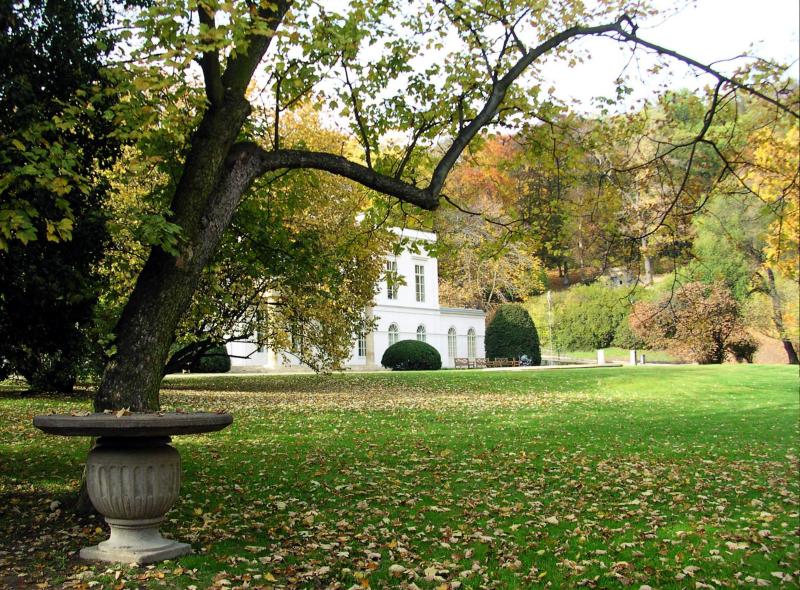
After visiting the museum, you can visit the unique church of the Archangel Michael (Chrám sv. archanděla Michaela na Petříně), also called St. Michael’s Church, a traditional Ukrainian wooden church. This small wooden Orthodox church with a shingled roof, situated in the Kinský Gardens, is a typical folk wooden building from the 18th century, brought to Prague in 1929. The church is part of the collection of the Ethnographic Museum.
Have a pleasant walk while discovering the beautiful buildings and nature this garden has to offer. Get lost in its mysterious spots and waterfalls. The zig-zag paths will take you to several beauties of nature.
The Kinský Gardens are a perfect place to spend the afternoon, wandering around and getting to know the magnificent history of Prague and the Czech Republic, both at the Summerhouse and St. Michael’s Church.
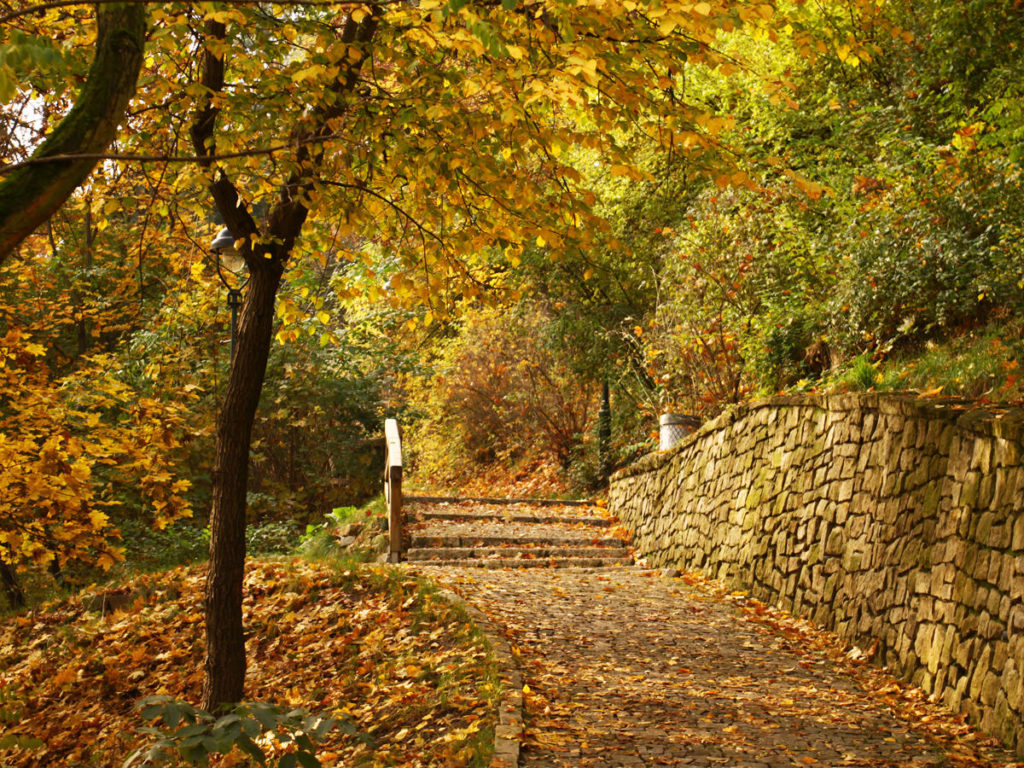
The Tour de France has started five times abroad over the past eight years. Soon, the beginning of the most famous cycling race could take place in Prague.
“Prague is a beautiful city, one of the most beautiful capitals. If it stands, we will judge it with the greatest possible attention,” said the general director of the legendary race, Christian Prudhomme.
The lead course designer, Thierry Gouvenou, confirmed that Prague could enter the game of organizing the Tour. “I know that the City of Prague has already established contacts with our organizing agency ASO,” informed Gouvenou at the end of July.
Negotiations are in progress. “We are acting in cooperation with the Czech Cycling Association, with Škoda Auto and with the organizing agency,” said Prague City Councilor for Education, Sport, Science and Business Support, Vít Šimral.
The costs of the Tour organization or the start of the three-week race is millions of crowns. This year the Tour started in Brussels, next year it will start in Nice, and in 2021 the so-called Grand Départ will be host in Copenhagen.
“We’ve been doing everything we can to get the Tour to start here. Negotiations are in progress, but I can’t conclude how they will evolve. We will officially give a resolution together with our partners in three or four months” added Šimral.
This is probably why the Czech Cycling Association is slightly restrained about the Tour. “I heard that we are working on it, but I do not know anything else. When someone contacts us, we will deal with it, but now we do not know anything specific,” responded Petr Marek, president of the Cyclists’ Union.
On the contrary, Šimral remarked that at the beginning of next year a delegation of representatives of the organizing agency ASO should arrive in Prague to negotiate the submission of the candidature.
“We will submit the candidature if the preliminary negotiations confirm us that we have a real chance to organizing the event,” explained Prague councillor.
The Grand Tour cycling races have never been held in the Czech Republic, although there have been recent efforts to get the Giro d’Italia. There were speculations about 2017 or 2018 and the politician Václav Klaus Jr. (Tricolor of the Citizens’ Movement) was involved. However, negotiations were not successful, and the Giro began in 2017 in Sardinia, and a year later in Israel.
Peter Sagan’s fan page on Facebook published the profiles of three proposed stages for 2023 of the Tour in the Czech Republic, giving a hint about the efforts to organizing it in the Czech Republic.
The itineraries of the stages are presented in the official visual style of the Tour de France and, according to the label, come from La Flamme Rouge, the profile creator of the biggest bike races.
The 18.5 kilometres long Prague time trial runs from Josefov to Vítkov through points such as the Strahov Stadium and Charles Square. The next stage around the capital is 160.5 kilometres long and leads cyclists through Slaný or Beroun, including two climb bonuses. Also, a 195 kilometres long, crossing from Prague to Karlovy Vary, with several climbs and a total of five bonuses.
In the end, however, it turned out that the three proposed stages are probably only the work of La Flamme Rouge users, where cycling enthusiasts discuss races or stages and can model their route profiles.
Šimral was surprised by the stage designs. “That was ahead of us, we’re not that far,” he smiled. “We have already begun to think theoretically where the stages would lead, but we are at the very beginning, and therefore I do not want to give more details,” Prague councillor added.
The Tour de France in the Czech Republic would mean a considerable advertisement for Prague and the whole country. The situation should be more precise at the beginning of next year.
Prague Airport has introduced a long-term concept and development of the airport as a response to the increasing number of passengers in recent years.
The Ministry of Finance approved the investment in the first stage of the enlargement of Terminal 2 of approximately CZK 16 billion.
About CZK 9 billion is invested directly in the extension of the terminal, while the remaining CZK 7 billion in related constructions, such as taxiways, a parking or an elevated road and other traffic routes in front of the terminal.
Andrej Babis said Wednesday the Vaclav Havel Airport is planning to expand its Terminal 2, which currently serves flights to the visa-free Schengen zone countries, and will build a new runway by 2028, among other things.
“The development will be financed from the airport’s resources and will not burden the national budget in any way. The projects will lead to the modernization of the airport and make the transport more efficient to maintain high passenger comfort,” says Alena Schillerová, Minister of Finance.
The number of passengers using the airport could jump to 30 million a year.
After the completion of the first phase of the extension of Terminal 2 in 2028, a total of 9 new aircraft contact points with boarding bridges and gates for short and medium-haul flights will be added. However, there will also be five alternative aircraft available for handling long-haul flights.
The development planned over the next six years will see an additional 50% retail space by 2026, according to Jiří Petržilka, Executive Director Non-Aviation Business at Prague Airport.
“We just finished the biggest duty-free tender process to date, a five year contract, which was won by Lagardère Travel Retail” he added.
“The first new shops will open in January 2020 and the retail refurbishment will be finished by June 2021. There are three phases of reconstruction and after three months, the first set of stores will be completed and open. It’s been one of the most interesting tenders we’ve ever done, especially for the Travel Essentials part of the business for which were not able to provide passenger data,” he said.
“We want to build an airport city, even though it’s not easy to build and you have to overcome a lot of bureaucracy. It’s the most important project in the history of Prague Airport.”
“We are currently in the first phase of designing – phase one – for development of Terminal 2, where all the traffic will be centralised. But we have to reconfigure the whole traffic system and then phase two development will start in 2022.”
The airport has reached capacity, with 16.8 million passengers using it last year and 17.7 million expected this year.
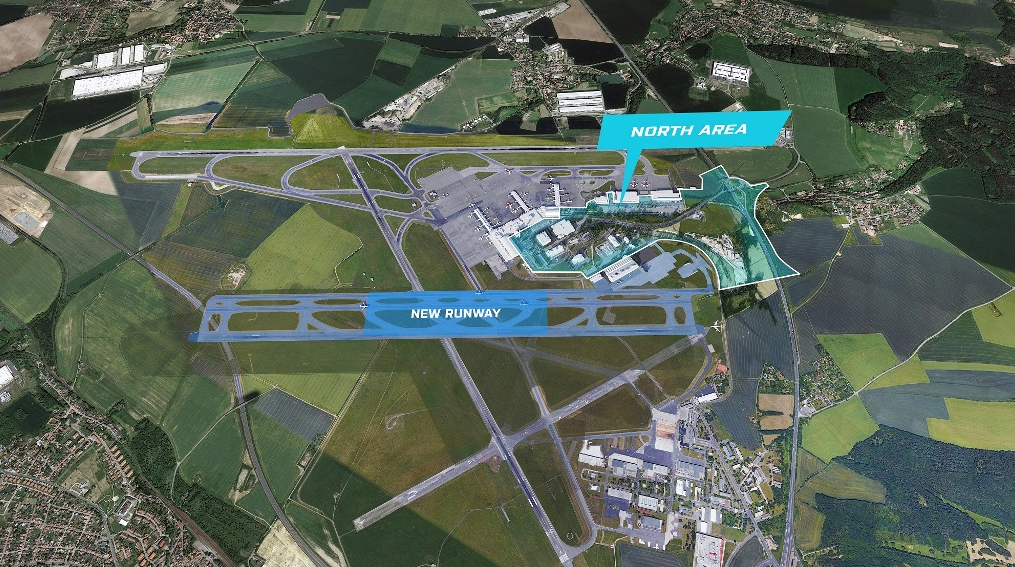
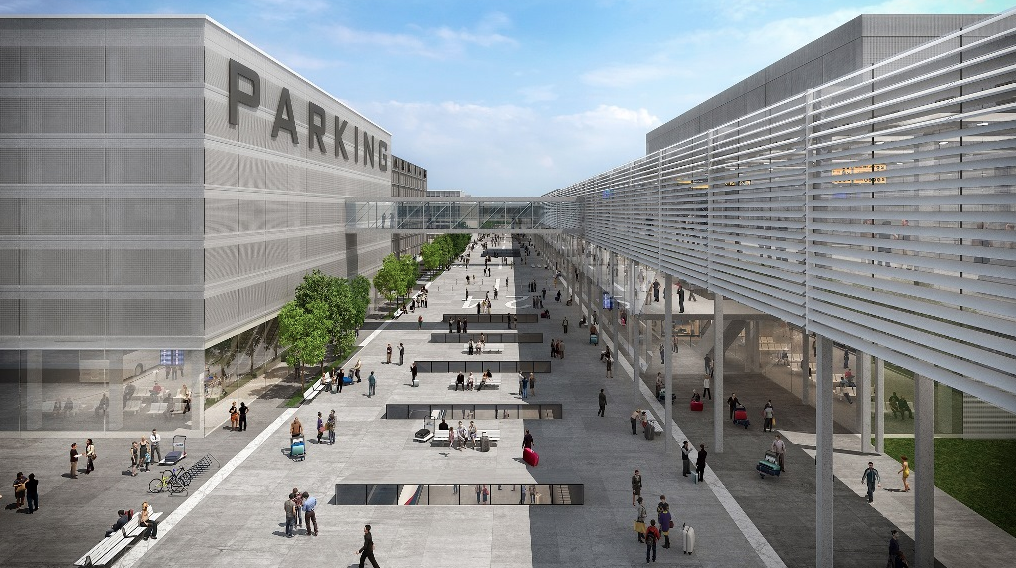
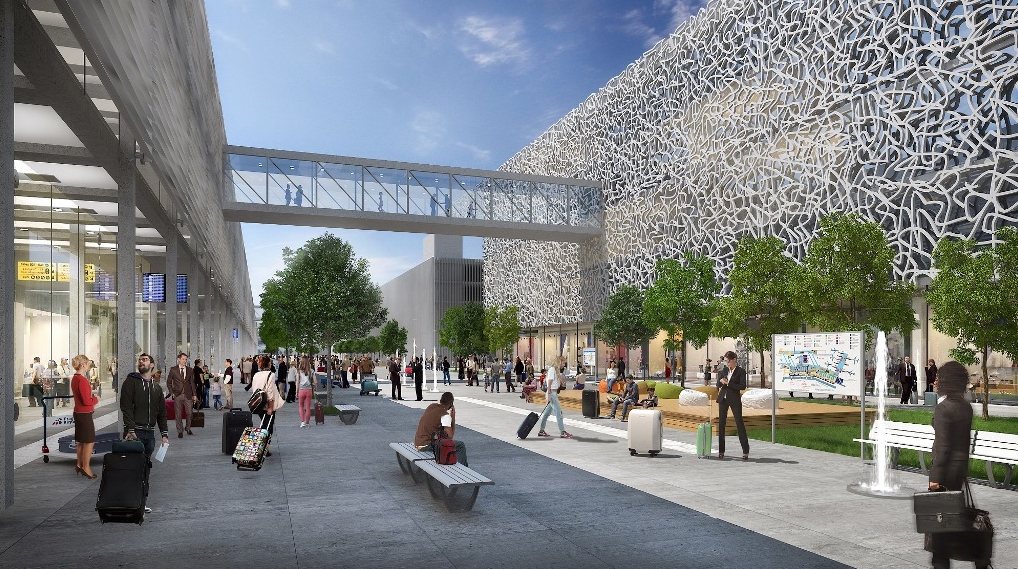
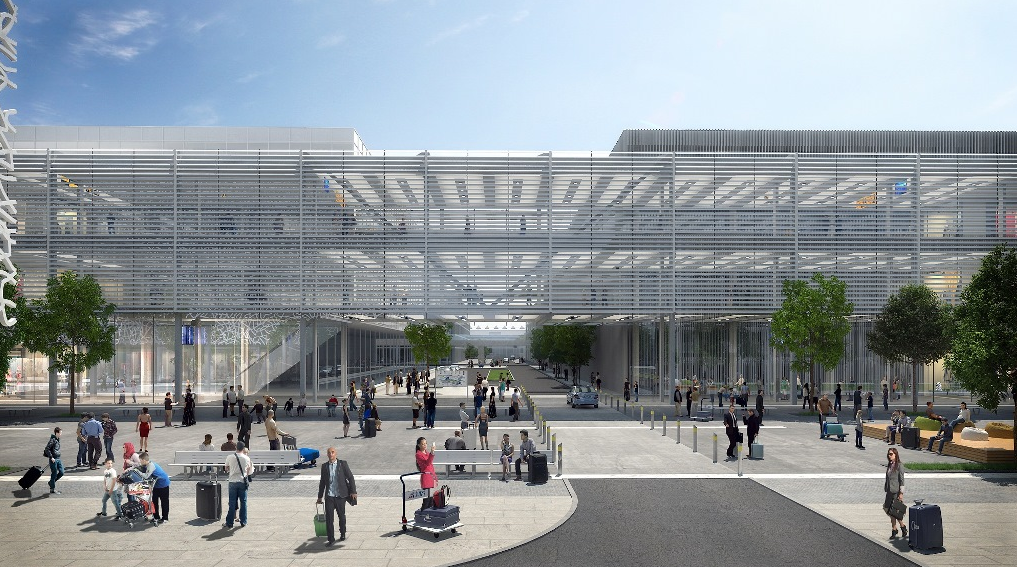
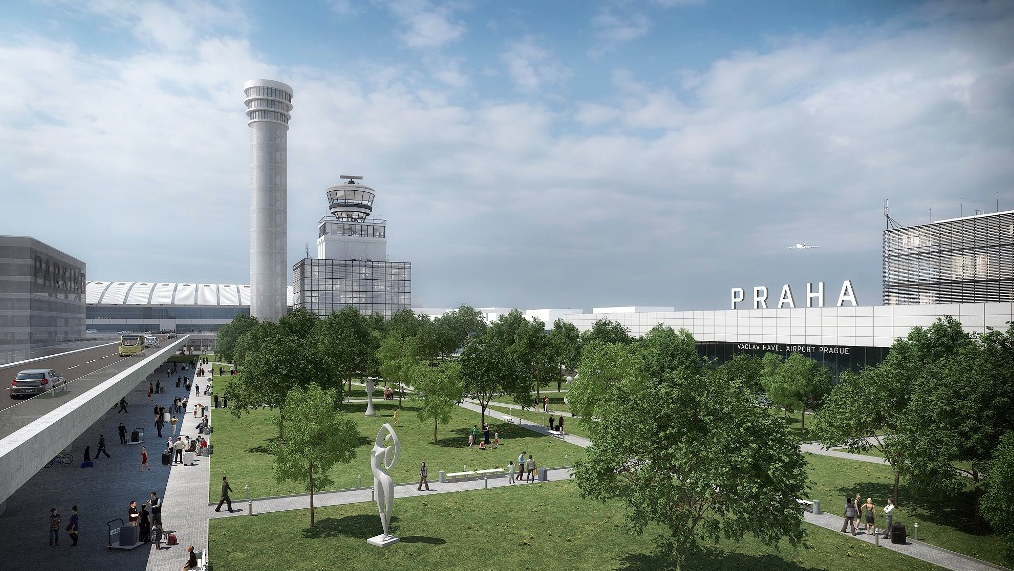
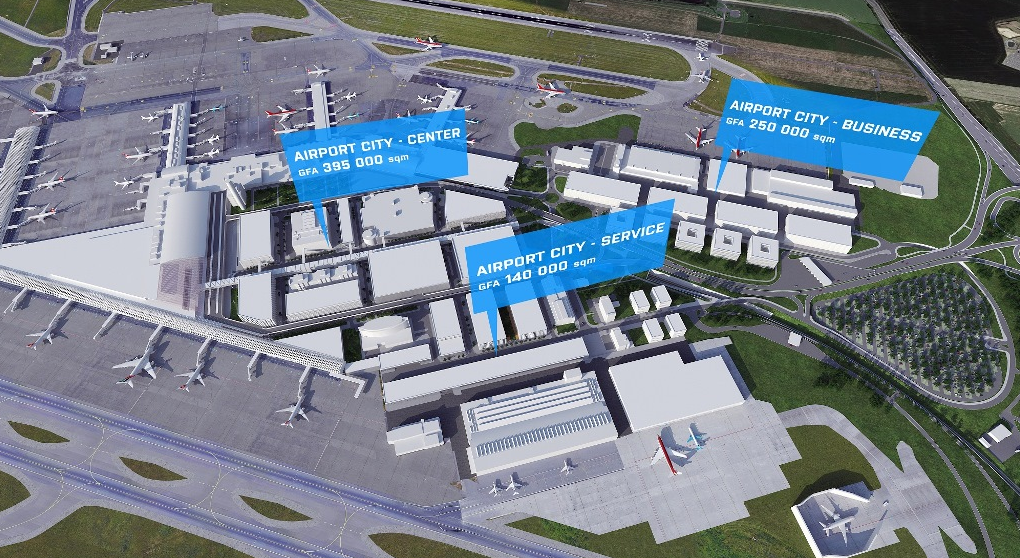
Full student dormitories and too expensive rents on one side and empty city apartments on the other. To solve both problems, the City of Prague 3 project offers students an affordable rent of a municipal apartment for 30 hours a month looking after the elderly in a nursing home.
“We believe that the project that has just started will bring two generations closer together and bring different perspectives on the present we are living,” says Deputy Mayor of Prague 3, Ondřej Rut (Green Party).
In return, students have to spend 30 hours a month with residents of a nursing home for a discounted flat rental. For example, they can go shopping, help with computer work, or take them for a walk.
“We talk a lot, play board games or play the guitar. For me it’s a way of relaxation,” explains Cuong Manh Vu, a native Czech with Vietnamese roots and one of the students who joined the project.
“As a college student, it is quite difficult to get housing at an affordable price. I have been studying sociology, and social policy at Charles University and I have always wanted to dedicate myself to elderly, so for me, it’s a great two-in-one offer,” adds Cuong Manh Vu. In exchange for his time, he received from Prague 3 his apartment in Krásova Street, the house which is also inhabited by nursing clients.
The City Hall found inspiration abroad, where such programs have been successfully operating for several years. The program included two municipal flats. Student Van, as he has started to be nicknamed by the elderly in the house, pays for an unfurnished apartment rent 2688 CZK per month, electricity bills not included. In the second apartment in Roháčova Street, which is almost twice as big, a student pays 5172 CZK per month, electricity not included.
Connecting generations praises everyone
“We had these two apartments in Prague 3 available, so the idea was born. The interest was great, and it looks like the project is working,” says Deputy Mayor Ondřej Rut. “In the Czech Republic, we are probably the only ones doing something like this,” he continues, adding that he would like to maintain the City Hall project in the future.
Student visits are appreciated mainly by residents of the nursing home. They agree that Van’s presence is exciting as it makes them think of other ideas. “Young people make us feel a little more rejuvenated as if we are not old,” one of the women said, appreciating the connection of generations.
Albertov and Národní třída in Prague are symbols of November 17th and this year they will become essential places to celebrate the 30th anniversary of the beginning of the Velvet Revolution.
The Freedom Festival, as the citizens’ initiative calls the set of events, will occur on Sunday 17 November in Albertov and then follow up with a series of other events. See what happens and where.
Velvet procession
A memorial procession on the route of the student manifestation on 17 November 1989. It is organized by the Freedom Festival initiative and ART Prometheus.
- When: November 17, starts at 14:30 on Albertov for approximately 2.5 hours.
- Route: Albertov – Na Slupi – Přemyslova – In the Fortress – the circuit at Vyšehrad – In the Fortress – Vratislavova – Vnislavova – Subway railway bridge at Výtoň- Rašínovo Embankment – Masarykovo Embankment – ends at Národní třída.
Free November: Commemorating November 17 at Albertov
Meetings of academics, students and citizens, concerts, discussions, presentations of student activities. Organized by: Center of Associations, Students and Graduates of Charles University.
- When: November 17, starts at 9:00 until 14:30 approximately.
During the day, student clubs will present their activities at Albertov, several discussions will take place, and there will be a chance to see a unique exhibition of 17 stories of 17 November from 17 faculties of Charles University.
Velvet sanctification
Satirical parade of masks, performers and musicians through the centre of Prague. Organized by: FORUM association
- When: November 17, starts at 14:00 at Kampa for approximately 3.5 hours.
- Route: Kampa – Maltese Square – Charles Bridge – Smetana Embankment – Národní třída – Na Perštýně – Jilská – Old Town Square – Celetná – Hybernská (ending in the courtyard of the Hybernská Campus).
Communication 89
A multimedia exhibition in a unique space in Letná. Organized by Shoah Memorial Prague o.p.s.
- Where: Letná Plain (opposite Generali Arena)
- Opening hours: 10:00 – 18:00. Open until the end of November.
The memory of a Nation: 1989
Projection and light installation on Národní třída
- Where: Národní třída
- When: November 17, at 17:00, 18:45 or 20:00
This year’s memory of the nation is preparing a stunning light installation and projection at Národní třída. Light, sound, atmosphere, but mainly stories related to the anniversary of the Velvet Revolution. The screening is presented by Memory of Nation in collaboration with 3dsense and the association Díky, že můžem.
Nation Memory Awards
The award ceremony for personalities who have shown in their lives honour, freedom and human dignity. Organized by: Post Bellum, o.p.s.
- Where: National Theater
- When: November 17, at 20:00
ČT2, STV and ČRo Plus will broadcast the National Memory Awards live
This year’s laureates are Władysław Frasyniuk (Poland), László Regéczy-Nagy (Hungary), Dietrich Koch (Germany), Dalma Špitzerová (Slovakia) and Miroslav Hampl (Czech Republic).
Concert for the future
Concerts and speeches on Wenceslas Square. Organized by: Nerudný fest.cz
- When: November 17, 16:30 – 22:00
- Performers: Mig 21, Tata Bojs, Buty, Vypsaná fiXa, Aneta Langerová, Vltava, Už jsme doma, Lenka Dusilová, Matěj Ruppert, Poletíme?, Bára Zmeková, Thom Artway, František Černý and Karel Holas from Čechomor, Circus Brothers or Skety.
- Speakers: William Luers (USA), Michael Žantovský, Šimon Pánek, Jiří Přibáň, Václav Malý, Petr Pavel, Jan Kysela, Nora Fridrichová, Lída Rakušanová, Eva Dudová, Anna Hogenová, Lucie Smolková, Tomáš Halík, Jáchym Topol, Martin Mejstřík, Hynek Čermák, David Klimeš and Rosťa and Šimon Novák.
Korzo Národní
Great street party in Národní třída. Organized by: Association Díky, že můžem.
- Where: Národní třída
- When: November 17, 10:00 – 22:00 outdoors / followed by concerts at Rock Café and FAMU Club
Throughout the day there will be a rich program on several stages and the street, in addition to concerts and theatres, exhibitions, children’s program, lectures and workshops.
“A person who is healthy and has a good family does not need more. It’s already rich!”
Cozy shop with Syrian and Lebanese specialties. At Emessa, they offer Lebanese wines, coffee and tea sets, Arabic candy and coffee, dates, beverages, spices, soaps with olive oil, etc.
Sixty per cent of the things you can find are imported from Syria, and thirty-five from Lebanon. Emessa is a shop on Politických vězňů street, where we can spot Mr. Murhaf, originally from Homs, and on their shop Sweet Palace on Vodičkova Street, his wife, Mrs. Wafau. Initially, Mr. Murhaf may look shy, but once you talk to him, you can look forward to having a pleasant chat over cardamom coffee about various treats, recipes, or Arabic spices. You will learn, for example, that caraway tastes excellent with cheese.
And what does Emessa mean? It is an old Greek name for the Syrian city of Homs, which is in the Midwest of Syria.
Mr. Murhaf and his family have lived in Prague for thirteen years. He first visited Prague in 1986 when he attended a course of X-ray welding. Two years later, he returned to another course, and since then he traveled to the Czech Republic with his family for the summer holidays. “My profession is a businessman, so I started importing water pipes, sinks, and sanitary ware into Syria. I represented several Czechoslovak companies in Syria and Lebanon. I remember times when a cutlet with a side dish and two beers only cost 28 crowns. But the average salary was also 1800 crowns,” says Mr. Murhaf.
In 2007, the family opened the Sweet Palace Confectionery and Delicatessen in Vinohrady, which was very popular among customers. In addition to incredible goodies, the guests appreciated the homely atmosphere that Mr. Murhaf and his wife managed to maintain in their stores. “A person who is healthy and has a good family does not need more. It’s already rich!”
How do Czechs react to your shop?
Murhaf: There are not many Arabs in Prague, so often Czechs come buy to my shop.
Have you ever been affected by any attitudes that Czech society has had towards Muslims over the past few years?
Murhaf: “You know, in Syria, we have lived side by side with Christians, Muslims, Jews. Mosques stood right next to the churches. No racism or religious problems occurred. I help other families who move to Bohemia from Syria and advise them to respect the Czech and traditions.”
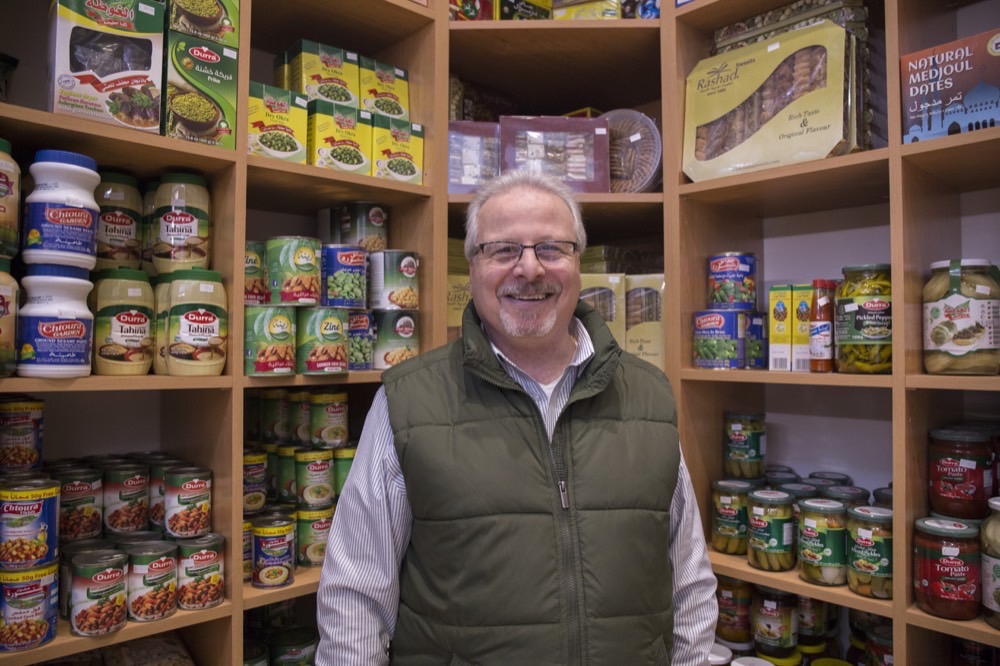
Photography © Alžběta Diringerová
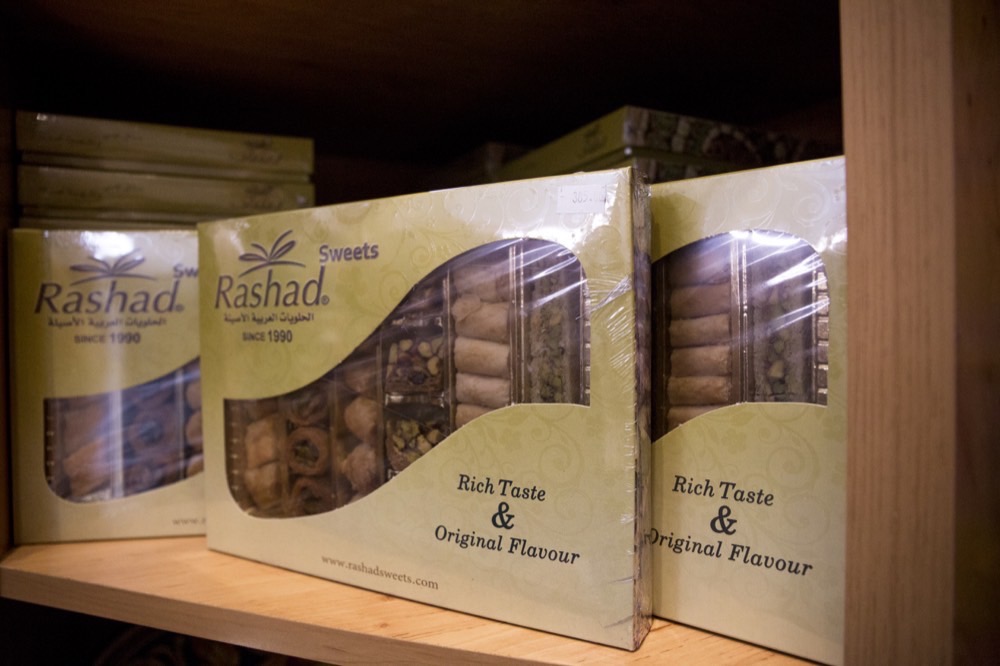
Photography © Alžběta Diringerová
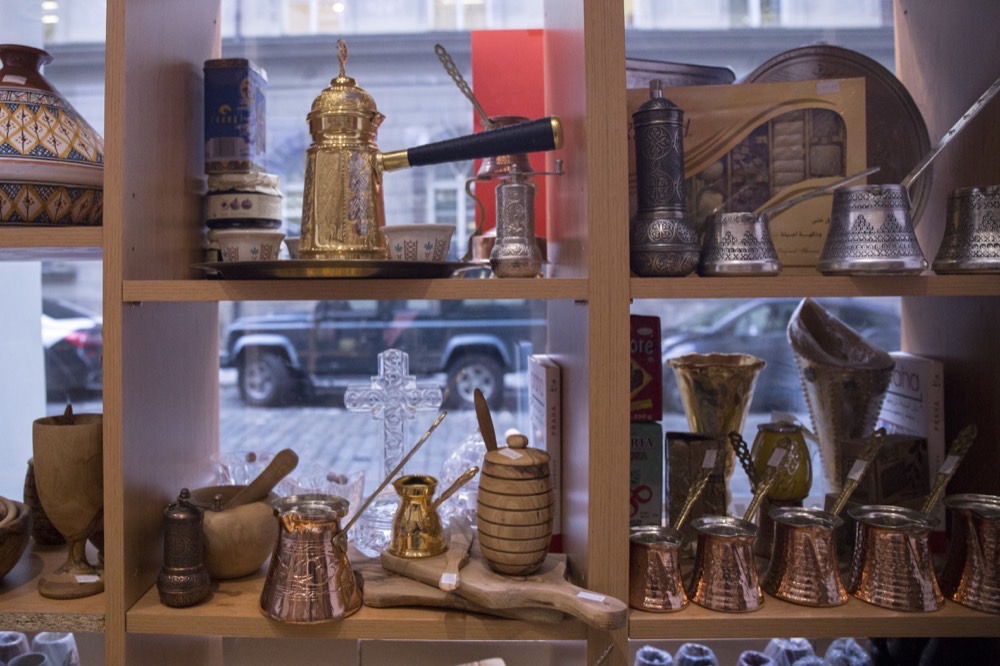
Photography © Alžběta Diringerová
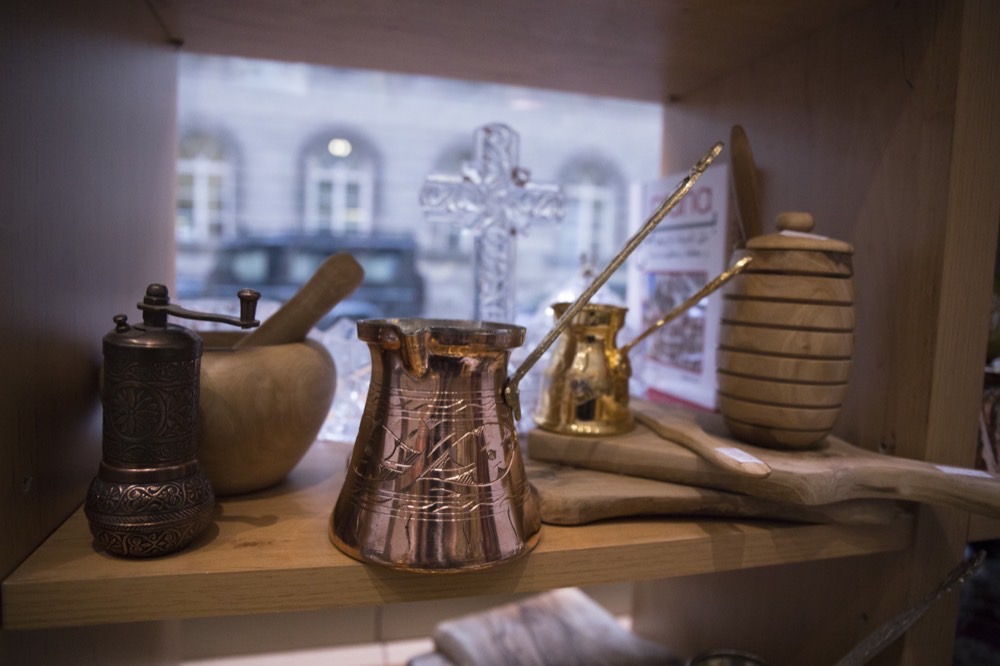
Photography © Alžběta Diringerová
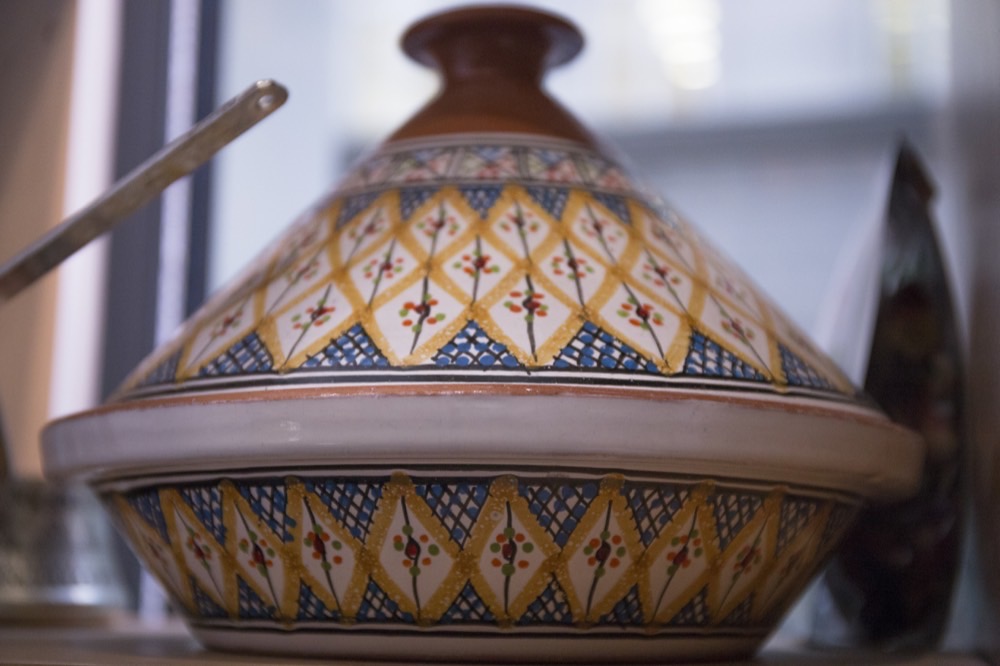
Photography © Alžběta Diringerová
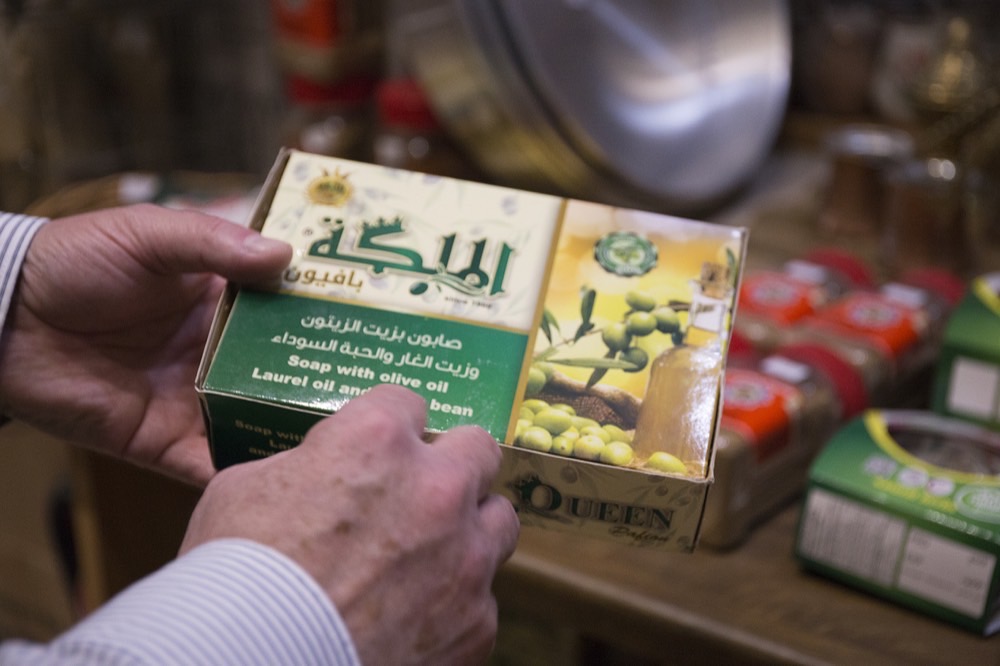
Photography © Alžběta Diringerová
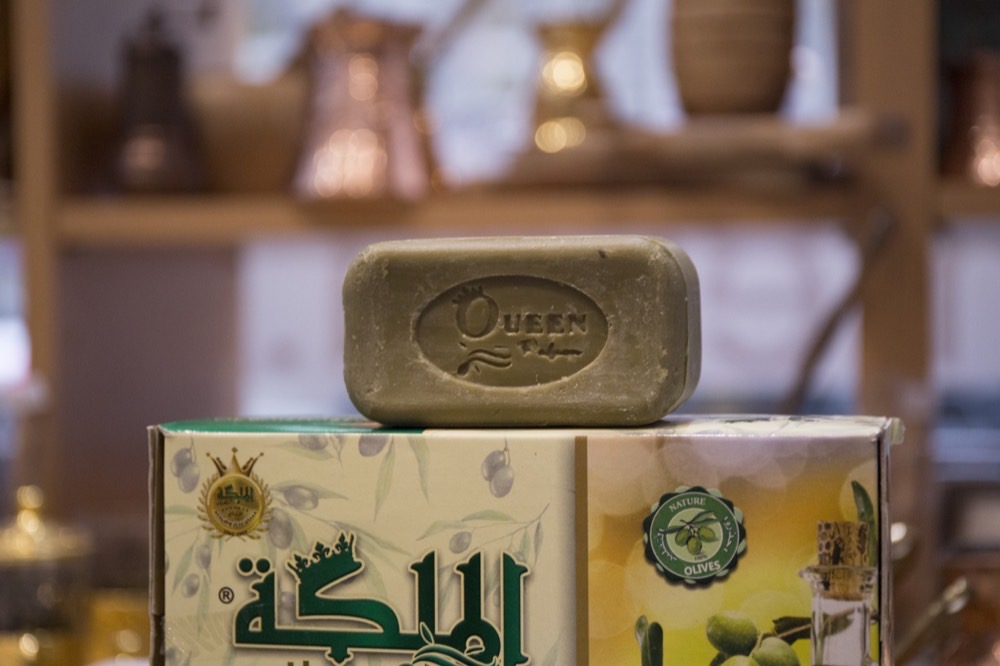
Photography © Alžběta Diringerová
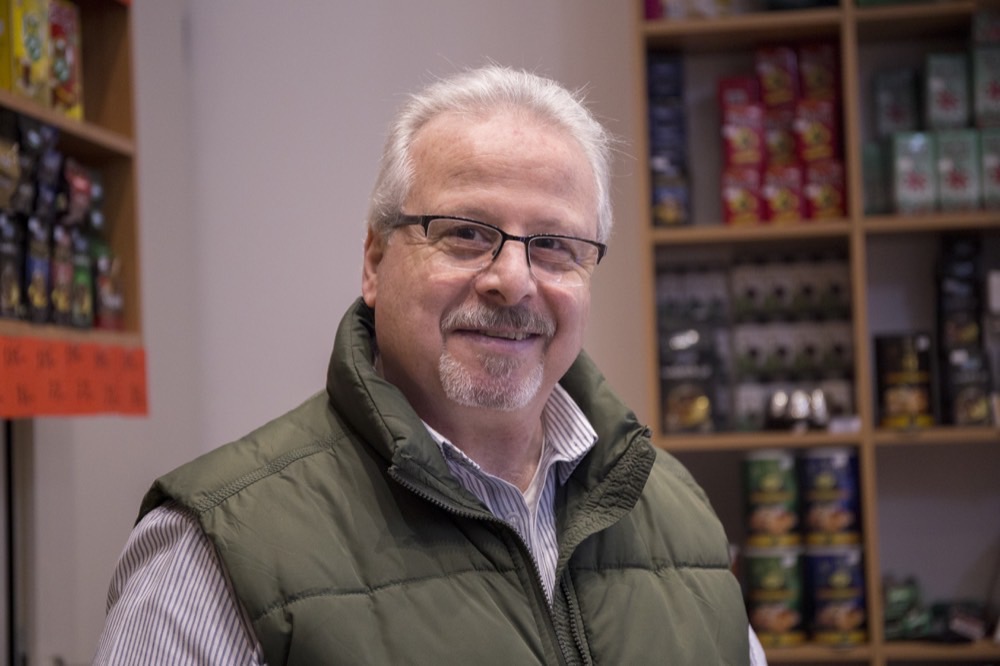
Photography © Alžběta Diringerová
French entrepreneur, Alexis Manach, brings French street food culture to Prague. A highly professional team led by him will delight you with fresh, rich and affordable dishes. Open Wednesday to Sunday from 11:00 to 22:00, try French classics on Manifesto Market Florenc or at your doorstep, with the food-delivery company Wolt.
A “Bouillon” is an institution in Paris that now can also be found in Prague, specifically at Le Petit Bouillon, a smaller and modern version. The first “bouillon” appeared in the mid-19th century in Paris, created as a place where working-class locals could have a comforting and low-cost meal. It also refers to the level of the boil (slow-cooking food) and the stock to add flavour to their dishes.
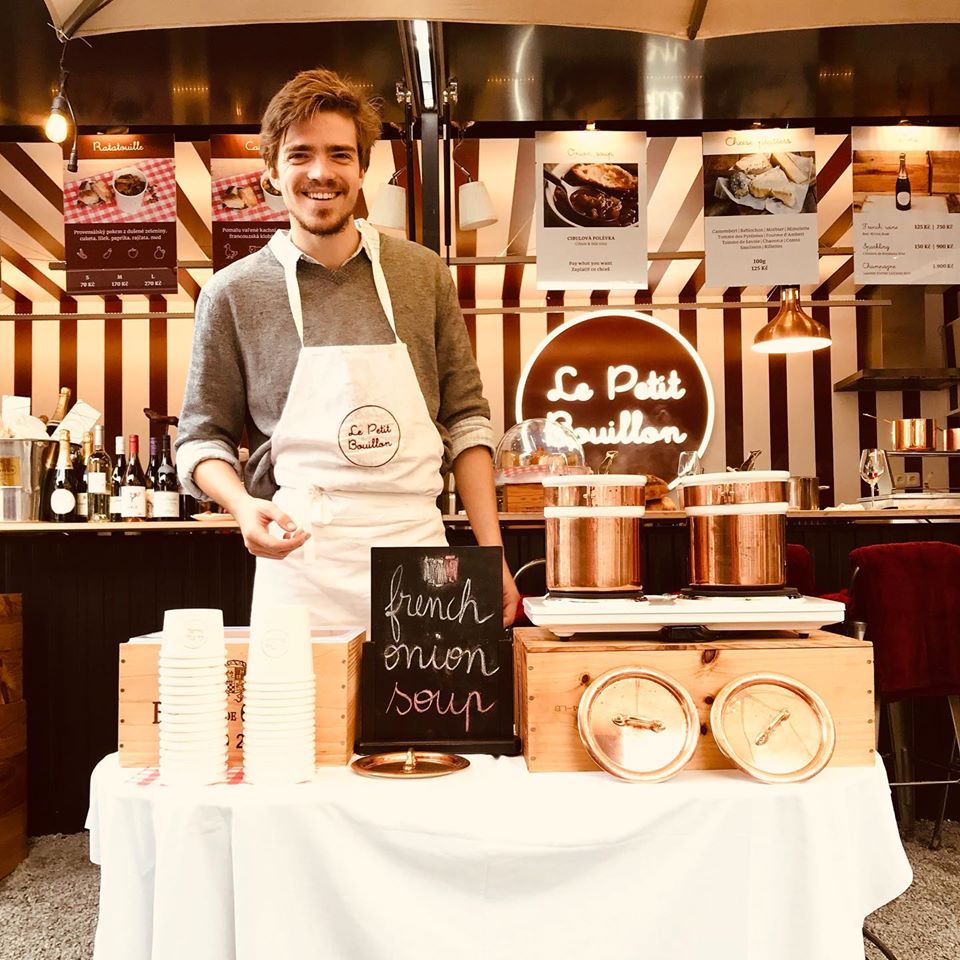
Source: Le Petit Bouillon on Facebook
Discover authentic French food through classics such as Onion Soup, Cassoulet, Boeuf Bourguignon, Ratatouille… All traditional recipes served in less than 30 seconds, packed with flavour and slow-cooked from 4 to 6 hours. Le Petit Bouillon is accessible for everyone, as you can eat in less than 20 minutes and for under 200 CKZ. Sit in the bar and listen to the stories of what they cook and sell, while you see the whole preparation process in a cosy and warm atmosphere.
Taste popular dishes packaged in different sizes cups (S, M or L) sell in a Street food style. A challenge like a cassoulet, a very rich, slow-cooked casserole named after its cooking vessel, with French duck leg confit, French pork sausage, pork belly, white beans, onions, carrots, garlic and Provence herbs. Also, the famous beef bourguignon, a delicious and iconic beef stew braised in red wine for at least 6 hours.
Le Petit Bouillon also offers a degustation menu to sample all the flavours at once. It consists of onion soup or ratatouille as a starter, then continues with either cassoulet or beef bourguignon, 100g of a cheese platter and pastry to conclude, whether it is with three macarons or two pies. You can also enjoy four different French wines pared at each stage. A wine expert will recommend you the best pairing for every dish, carefully selected and with excellent quality.
They can please all cheese lovers with their selection of 9 different kinds of cheese: Camembert, Reblochon, Morbier, Mimolette, Tomme des Pyrénées, Fourme d’Ambert, Tomme de Savoie, Chaource or Comté. Order a cheese platter or their delicious dry sausages, duck rillettes or foie gras. You can have either 200g, 400g or 600g with bread on demand.
They partner with suppliers such as Café Milleme for homemade macaroons and pastry, Fransyr for the cheese, Le Bourgin for their wines and champagne, and Artic Bakehouse for the bread.
Its French cuisine will not disappoint you. If you visit Le Petit Bouillon, there is a 15% discount for all Prague Morning readers. They will take care of you, so enjoy and bon appétit!
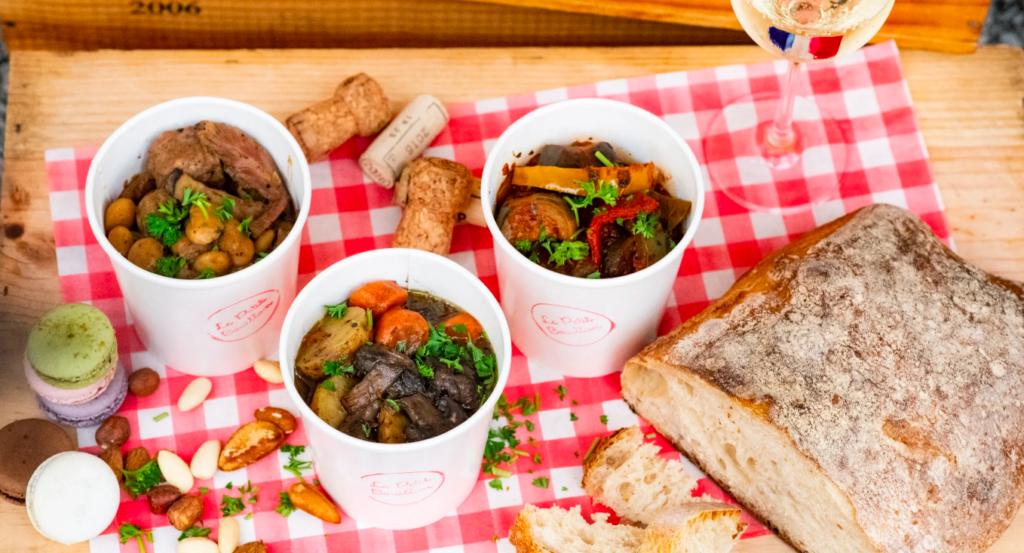
Source: Le Petit Bouillon on Facebook
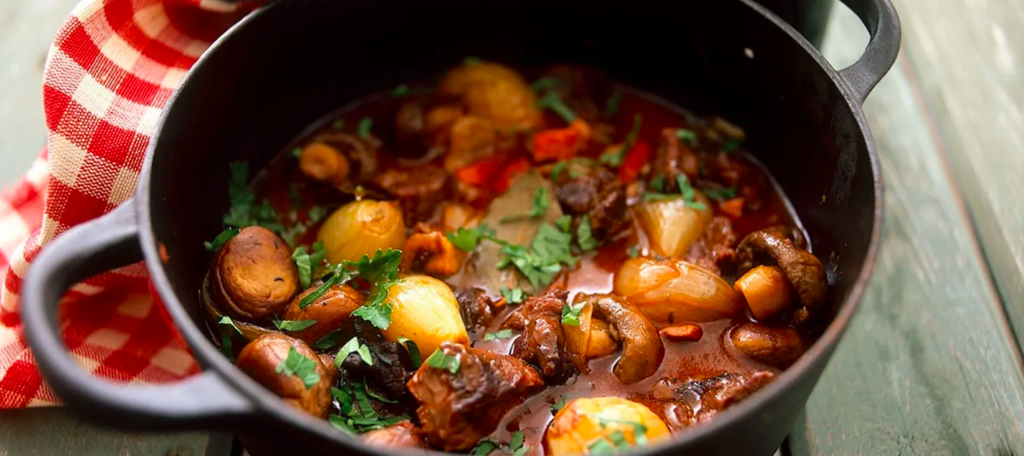
Source: Le Petit Bouillon on Facebook
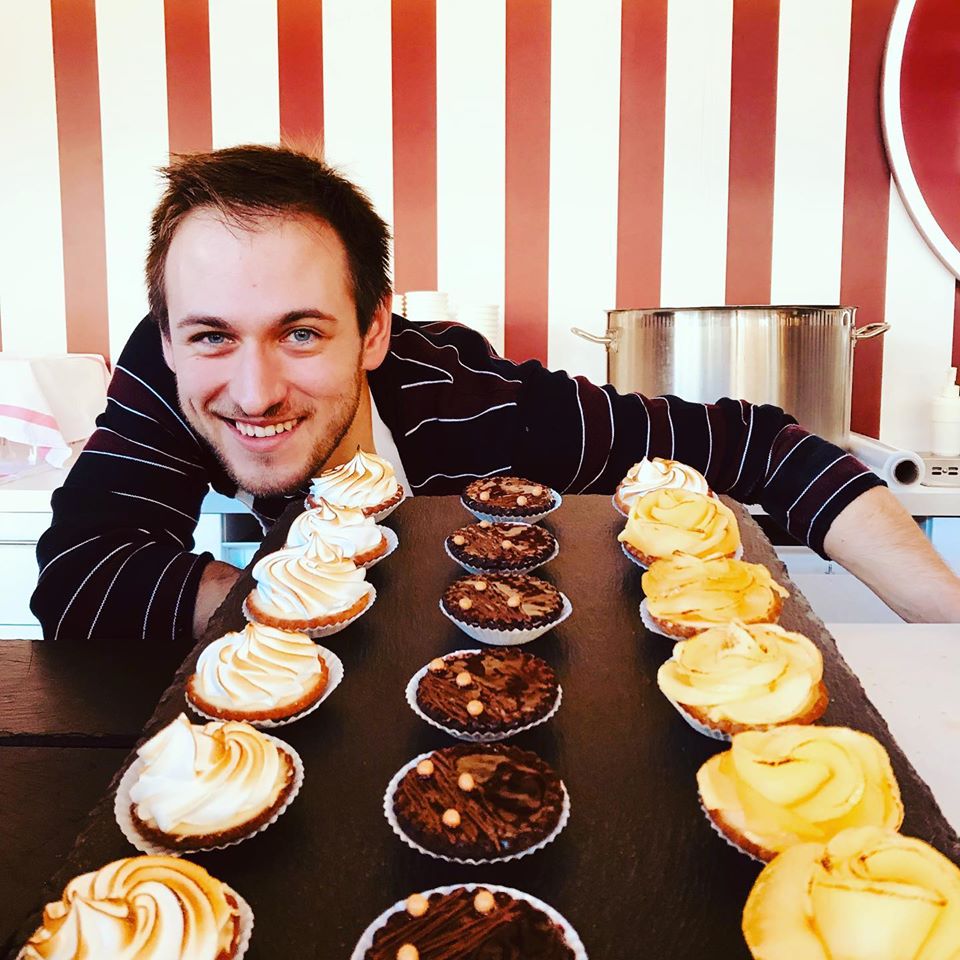
Source: Le Petit Bouillon on Facebook
People attacked it, climbed over, demolished with all their power. Finally, they could breathe; they were free.
The fall of the Berlin Wall tore off an avalanche of events that led to the fall of communism in the Eastern Bloc. The 30th anniversary of the reunification of Berlin will be commemorated in Prague’s Holešovice.
“We decided to organize a cultural event dedicated to the fall of the Berlin Wall because we feel that in the context of commemorating the 30th anniversary this event reminds all of the fall of the Iron Curtain in Prague. As we have a personal relationship with East Germany, our event takes place in Holešovice, near the Little Berlin district. We also want to conceive this day as an unofficial opening of our new Kabelovna room and commemorate this anniversary every year,” said Lukáš Rychtařík from Championship Music.
Visitors can look forward to a busy schedule on Saturday, 9th of November, from 1 pm to 10 pm, with the Minister of Culture, Daniel Herman. During the event, the artistic installation of the Iron Curtain, designed by Vítek Škop, will be unveiled.
At the same time, an exhibition of three large-format period photographs will be revealed – a reprint of a photo with balloons from November 1989 by Jana Šilpocha, as well as two enlargements of the Berlin Wall by Jana Šibíka, which are also included in his new book, 1989. It will be for sale, and the author will personally sign it.
In the atmosphere of 1989 visitors will see a retro furnished room with secondhand, listen to hits directed by Vojtěcha Tkáče and Zdeňka Lichnovského (moderators of the program Reflector on Radio 1), and a ride through the legendary Trabant. A thematic screening by HBO will run throughout the afternoon.
Ben Cristovao and the singer of the band Mirai will also take part in this event, and together they will introduce the video clip for the new song “Come to me closer,” filmed in Berlin. There is also a vegan bistro in Kabelovna, and the menu includes vegan sausages, pickled sausages, currywurst, and solyanka.
More information here
Břevnov is one of the traditional districts of Prague in which you can find the beautiful and oldest male Monastery in the Czech Republic.
Located in Prague 6, precisely in Markétská 1/28, the closest public transport stop is the Břevnovský klášter tram stop. Situated between the White Mountain (Bílá Hora) and Prague Castle, the Břevnov Monastery is still active, and Benedictine monks are living in it. Founded by Prince Boleslav II and the second Archbishop of Prague St Adalbert, the present appearance of the Benedictine complex represents a masterpiece of the Baroque.
The Monastery runs a hotel and a traditional Czech restaurant with an open fireplace. The restaurant Klášterní šenk, located in the grounds of the Monastery, has a beautiful beer garden opened in the summer that offers most of the beers produced there. Therefore, Břevnov Monastery is also associated with a brewery whose production can still be tasted today, Břevnovský Benedict beer.
The entrance to the complex, including the garden, is free. The extensive garden adjoining the Monastery is where the abbot’s summer house named Vojtěška is located. The guided tour of Břevnov Monastery includes the visit to the Baroque church of St Margaret and the Romanesque crypt, Prelate’s residence (the representative house of the abbot) and the convent with the enclosure.
The admission fee in the Czech language is 100 CZK for adults, 60 CZK for seniors (65+) and students, 50 CZK for children (7–14 years) and free for children up to 6. You can also visit the Monastery in English both on weekends and on weekdays only after prior arrangement. Admission fee for guided tours in English are 150 CZK for adults, 90 CZK for seniors (65+) and students, 75 CZK for children (7–14 years) and free for children up to 6.
If you need more information about the admission and opening hours of the Břevnov Monastery you can visit the official website.
The Břevnov Monastery (Břevnovský Klášter) is in the heart of the neighborhood, and when visiting, you can go to plenty of other interesting sights nearby. The grounds of the Monastery are well worth exploring with charming gardens, and a restored Orangery converted into a contemporary art gallery.
This Monastery is a place that impresses the visitor with its historical atmosphere and open spaces, making it a perfect spot for escaping the hustle and bustle of the busy tourist centre of Prague.
